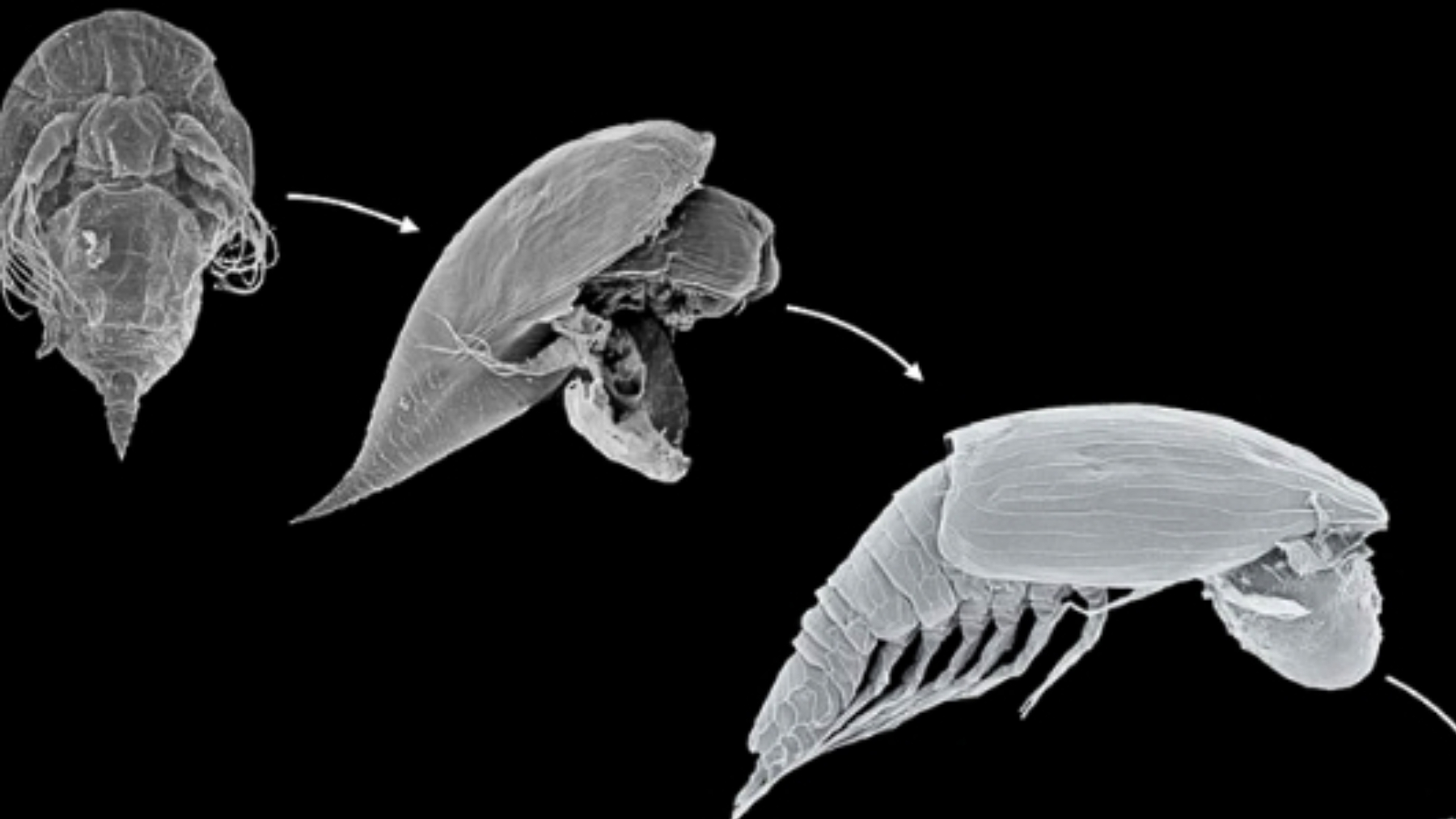If you think the worst thing Japan could export to the world was its giant hornets, we have bad news for you. Just a few weeks ago, a species of larvae very similar to the creatures that appear in the movie Alien was found in the seas off Japan. Luckily —or unfortunately— for us, these larvae are microscopic… they can’t eat us, but we can accidentally swallow them. (I know you needed new material for your nightmares, you’re welcome.)
Real-life Alien larvae
Scientists have known about the existence of these creepy creatures since the 1880s, but they had never managed to see them in their adult form. Now, a study published in Current Biology (September 2025 issue) provides 13 solid pieces of evidence that these larvae belong to a group of barnacles and are likely to be parasites when they reach adulthood. But how can something so small hide such a complex and creepy life form?
These larvae are tiny, literally smaller than a grain of sand. They have a common herbal first stage, maintaining a shell-less worm stage (yes, we know, it’s creepy to imagine them). Until now, scientists and biologists had not been able to identify their adult form, nor detect which poor animal they attached themselves to once they reached maturity.
How they tracked down these parasites
The tiny creature found in Japanese waters was detected by a group of scientists from the Natural History Museum of Denmark. Led by Niklas Dreyerm, the team collected more than 3,000 larvae from the surface of the ocean closest to Japan.
To study them, they used RNA and protein analysis to detect the genetic family tree of these crustaceans. Thanks to this, they confirmed that these creatures are related to barnacles, although they are not related to barnacles that are already considered known parasites (Rhizocephala).
How do these parasites live?
These parasitic barnacles infect crabs. To do so, they infect the host’s body from within. They grow like an internal network, castrating the crab so that it cannot reproduce (we could make jokes about toxic couples, but we’ll spare you because this is a serious scientific article /s).
These parasites are so effective that they end up altering even the behavior of the poor host: a male ends up acting like a pregnant female and caring for the parasite mass as if it were its own eggs. It’s the perfect strategy for the parasite, as it ensures that it will always receive food.
Why has this animal never been seen as an adult? It is probably because the adults live hidden inside other marine animals. Unless they are caught and dissected, they reside very well inside their hosts and are not easy for human scientists to see. Experts suspect that they may live in fish, crustaceans, or other unidentified invertebrates. Since they live inside their hosts, they are invisible to the naked eye, which is why they remain a mystery even today. Much to the delight of marine biologists, it seems that they have a lot of work ahead of them identifying the correct hosts.
Although it may seem trivial to the average person who does not have much knowledge of biology, this publication confirms the evolutionary position of these barnacles. The data supports the hypothesis that these barnacles are only a small part of a large diversity of barnacles. However, they remain one of the most mysterious parasites that marine biologists have researched in recent decades.
It has helped us to better understand how parasitism works in the sea and how different species of animals can evolve independently towards the same way of life—parasitic, in this case.
After more than 140 years of mystery, genetic studies have confirmed that these barnacles (so absurdly ugly) are actively related to barnacles and live as parasites. For now, scientists still have to discover which poor host has to put up with them and observe their adult stage for the first time. In the meantime, we’ll keep our fingers crossed that they don’t discover that they can indeed parasitize humans.
